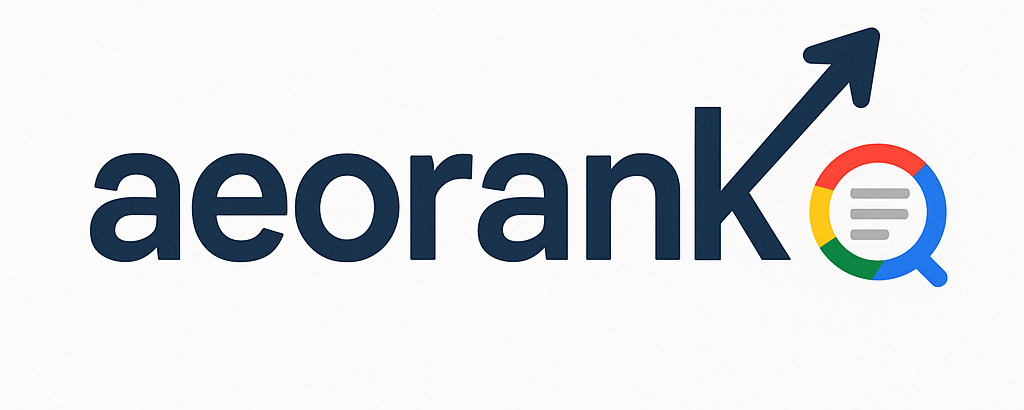
Is Google Deindexing Your Blog Post Generated by AI? Let’s Get Real
You know, there’s a lot of chatter lately, a real hum in the digital air, about AI-generated content and whether Google is just going to sweep it right off the search results page. It’s a common fear, isn’t it? This whole idea that you churn out a blog post with the help of a shiny new AI tool, hit publish, and then… poof! It vanishes into the vast, unforgiving abyss of the internet, never to be seen again by eager readers. Maybe it’s already happened to you, and you’re wondering if you’ve somehow crossed an invisible line. Well, let’s talk about it, shall we? Because the truth, as always, is a bit more nuanced than the headlines might suggest.
Honestly, when these tools first burst onto the scene, there was a quiet worry, a little voice in the back of my head, whispering, “Is this the end of human writers? Will Google just blacklist everything touched by a bot?” And for a minute, you might even think that Google’s recent updates, the ones focusing on “helpful content,” are specifically aimed at wiping out anything with an AI fingerprint. But here’s the thing: it’s not quite that simple. Google isn’t deindexing content *because* it was generated by AI. Nope, that’s not the primary issue. The real story runs a bit deeper.
The Google Gauntlet: What Does Google Really Care About?
Think about Google for a moment. What’s its ultimate mission? To serve up the most helpful, accurate, and relevant information to its users, right? They want to make sure that when someone types a question into that little search bar, they find exactly what they’re looking for, fast. They’re like the ultimate librarian, tirelessly sorting through every single piece of information on the web to present you with the very best. So, when we talk about whether content gets deindexed, or just plain old buried at page umpteen, it’s rarely about the origin story of the words themselves.
It’s about quality, utility, and trustworthiness. Google doesn’t care *who* holds the pen (or in this case, the keyboard and the prompt). They care about the *ink* on the page. Is it well-researched? Does it answer the user’s question comprehensively? Is it written by someone who genuinely knows their stuff, or at least presents information in a way that’s authoritative and reliable? This is where the whole E.E.A.T. framework comes into play: Experience, Expertise, Authoritativeness, and Trustworthiness. It’s their North Star for evaluating content. Imagine you’re looking for a recipe for coq au vin. Would you trust a recipe from a renowned French chef with years of experience, or one spat out by a random generator that’s never boiled water? Google leans towards the chef, naturally.
The “AI Content” Problem: It’s Not the Tool, It’s the Hand Wielding It
Let’s be candid. In the early days, a lot of what was churned out by AI tools was… well, let’s just say it was less than stellar. It was often generic, bland, sometimes factually shaky, and riddled with repetitive phrases. You’d read it and instantly feel like you were talking to a very polite, but ultimately uninspired, robot. This stuff, the low-quality, spammy, copy-pasted nonsense that offered no real value to a reader? That’s the kind of content Google targets. And honestly, it *should* be targeted. Nobody wants to wade through pages of digital dross just to find a single nugget of useful information.
When Google talks about “spam policies” or “unhelpful content,” they’re not wagging a finger at the AI model itself. They’re looking at the *outcome*. Did the content serve a searcher’s needs? Or was it just a thinly veiled attempt to rank for keywords without actually providing anything of substance? Content that’s scraped, regurgitated, or just plain thin, regardless of how it was created, is what gets pushed down, or even, yes, *deindexed* from the search index altogether. It’s not a ban on AI; it’s a ban on bad content, full stop.
Consider it like this: a high-speed drill is a powerful tool. In the hands of a skilled carpenter, it builds beautiful furniture. In the hands of someone who doesn’t know what they’re doing, it just makes a mess. AI is that powerful drill. The sheer volume of content now being produced with AI is astonishing, creating both incredible opportunities and, admittedly, a lot of digital noise. Google’s job is to filter that noise.
So, Can AI Content Actually Rank? (Surprise! Yes, But…)
Here’s the delicious irony: AI-assisted content can absolutely, unequivocally rank well on Google. Many websites you visit every day, even some of your favorite ones, are probably using AI in their content creation workflow in some capacity. The key is in how you use it. Think of AI as a powerful assistant, not a replacement for your own brain. It’s like having an incredibly fast, endlessly patient intern who can draft outlines, brainstorm ideas, rephrase paragraphs, and even generate a first pass at an article. But it’s still *your* article.
The “but” is crucial: you need to add the human touch. This isn’t just about spell-checking (though please, do that!). It’s about infusing your unique perspective, your real-world experiences, your genuine insights. It means fact-checking everything the AI spits out, adding your own voice, telling a personal anecdote, or incorporating data that the AI might not have access to. It’s like getting a first draft from a really smart intern, and then the actual, seasoned journalist takes over to polish it, verify it, and make it truly sing. This blend—the efficiency of AI with the irreplaceable depth of human intellect—that’s the sweet spot. That’s content that satisfies E.E.A.T. and delights readers.
The E.E.A.T. Tightrope: Making Your AI-Assisted Content Shine
If you want your AI-assisted content to not just survive but thrive, you’ve got to bake E.E.A.T. right into its core. How do you do that, especially when a machine helped with the heavy lifting? It’s all about augmentation, not abdication.
- Experience: Did the AI write about fixing a leaky faucet? Great. Now, did *you* actually fix a leaky faucet? Add your personal struggle, the tools you actually used, the unexpected twist. Share what you *learned* firsthand. That’s the real experience.
- Expertise: Don’t just let the AI parrot common knowledge. Dig deeper. Consult authoritative sources, quote experts, reference studies. Show that you or your site actually knows this topic inside and out, not just scratching the surface.
- Authoritativeness: Build your site’s reputation. Get mentions and links from other respected sites. Show Google (and users!) that you’re a go-to source in your niche. Your content should be so good that others naturally want to link to it.
- Trustworthiness: This is paramount. Are your facts correct? Is your advice sound? Are you transparent about your sources? Disclose any potential biases. If you’re using AI, ensure the final product is ironclad in its accuracy. A single factual error can tank trust.
Google’s helpful content system is designed to reward content that genuinely helps people. If your AI-generated draft becomes a truly helpful, human-verified, expert-backed piece after your intervention, then it’s golden. Google isn’t against AI; it’s against unhelpful content. Simple as that.
What Google Says (And What They Don’t)
Google has been pretty clear on this. Back in early 2023, they clarified their stance: “automated content is not against our guidelines.” The caveat, and it’s a big one, is that the content must be “helpful, original, and high-quality.” They aren’t interested in *how* you created the content, but *what* the content *is*. They even released specific guidance stating that AI could be used to generate content, as long as it adheres to their spam policies. That’s a huge distinction, isn’t it?
They don’t have a special “AI detector” that flags and deindexes content just because a bot touched it. What they do have are sophisticated systems that can identify patterns of spam, low-quality writing, factual inaccuracies, and content that’s clearly designed to manipulate rankings rather than help users. If your AI-assisted content falls into that latter category, that’s when you run into trouble. It’s a bit of a cat-and-mouse game, yes, but the goalposts are always about value to the user.
The Future of Content: Human-Augmented, Not Human-Replaced
The landscape of content creation is shifting, undeniably. AI isn’t a fad; it’s a powerful tool that’s here to stay, evolving at a dizzying pace. And honestly, embracing it, rather than fearing it, is probably the smartest play. The real skill moving forward isn’t just writing; it’s prompt engineering – knowing how to talk to the AI to get the best out of it. It’s about being an exceptional editor, a diligent fact-checker, and a creative thinker who can weave disparate ideas into a coherent, compelling narrative.
Ultimately, Google’s goal is to connect users with the best possible information, regardless of the method used to create it. If AI helps you produce truly helpful, original, and high-quality content that satisfies E.E.A.T. principles, then your blog post isn’t going to be deindexed. In fact, it stands a pretty good chance of ranking. So, don’t fear the machine; master it. Use it to amplify your human ingenuity, not replace it. Your readers, and Google, will thank you for it.
Frequently Asked Questions About AI Content and Google Deindexing
Here are some quick answers to common questions buzzing around AI content and its visibility in search results:
Can Google truly detect AI-generated content?
Google’s advanced systems are designed to identify patterns indicative of low-quality or spammy content, regardless of its origin. While they don’t have a public “AI detector” that specifically flags AI *creation*, they can certainly spot content that lacks E.E.A.T., originality, or factual depth, which often characterizes unedited AI output. The focus is on the *quality* of the content, not solely on whether AI was involved.
Will using AI tools like ChatGPT cause my blog to be penalized?
No, using AI tools like ChatGPT or similar language models won’t automatically penalize your blog. Google has stated that using automation, including AI, is permissible if the content is high-quality, helpful, and original. Penalties arise when AI is used to produce spam, manipulate search rankings, or create large volumes of unhelpful, low-value content that doesn’t meet user needs.
What kind of AI content is Google most likely to deindex?
Google is most likely to deindex content that violates its spam policies. This includes automatically generated content that is low quality, unoriginal, lacks helpfulness, is designed purely for search engine manipulation (like keyword stuffing), or provides an overwhelmingly poor user experience. If your AI-generated blog posts fall into these categories, they face a risk of deindexing.
How can I ensure my AI-assisted blog posts rank well on Google?
To help your AI-assisted blog posts rank effectively, always prioritize the human touch. This means rigorous editing, fact-checking, adding unique insights, personal experiences, and a distinct voice. Ensure the content demonstrates strong E.E.A.T. (Experience, Expertise, Authoritativeness, Trustworthiness), answers user queries comprehensively, and provides genuine value. Think of AI as a powerful drafting tool, not a final publishing solution.
Is human editing really essential for AI-generated articles?
Absolutely. Human editing is crucial for transforming raw AI-generated drafts into high-quality, trustworthy content that satisfies both users and search engines. It allows you to inject genuine expertise, refine the tone, correct any factual errors or inconsistencies, and ensure the article truly resonates with your audience. Without proper human oversight, AI-generated articles often lack the depth, nuance, and originality required for strong search performance and user engagement.
